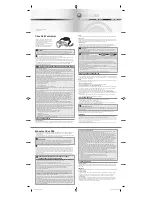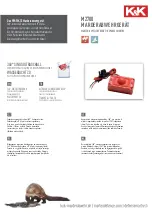
STE 80720
– 10-52 –
OPERATOR’S MANUAL
series Robot Controller
[Page 2]
E T H E R N E T S T A T U S
[ 2 / 3 ]
O
w
n
P
o
r t C o n n e c t
I P
P
o r t
I P 0 1 0 0 0
0 0 0 . 0 0 0 . 0 0 0
. 0 0 0 0 0 0 0 0
I P 1 0 0 0 0
0 0 0 . 0 0 0 . 0 0 0
. 0 0 0 0 0 0 0 0
I P 2 0 0 0 0
0 0 0 . 0 0 0 . 0 0 0
. 0 0 0 0 0 0 0 0
I P 3 0 0 0 0
0 0 0 . 0 0 0 . 0 0 0
. 0 0 0 0 0 0 0 0
• IP0 to IP3: Ethernet channel number
• OwnPort:
Robot port number
• Port:
Port number of the other connected device
• Connect IP: IP address of the other connected device
[Page 3]
E T H E R N E T S T A T U S
[ 3 / 3 ]
A
p p .
M o d e
S t
a t u s
I P
0 H
O
S
T
T C P / S
L
I S
E
N
I P 1 S C O L
T C P / C
C L O S E D
I P 2 S C O L
T C P / S
C L O S E D
I P 3 S Y S T E M
T C P / S
C L O S E D
• IP0 to IP3: This indicates the Ethernet channel number.
• App.:
Name of application using the channel
The connection in the control status from robot language uses
simple protocol when HOST is shown and uses non-protocol
communication when SCOL is shown.
• Mode:
Protocol type, open status
TCP/S indicates a server connection using TCP protocol, and
TCP/C indicates a client connection using TCP protocol.
• Status:
Ethernet port status
The statuses below are displayed. For the specific meaning of
each status, refer to any commercially available reference that
provides explanations of TCP/IP.
Closed
Close wait
Listen
Closing
Syn-Sent
Last ACK
Syn-Received Time
Wait
Established
















































